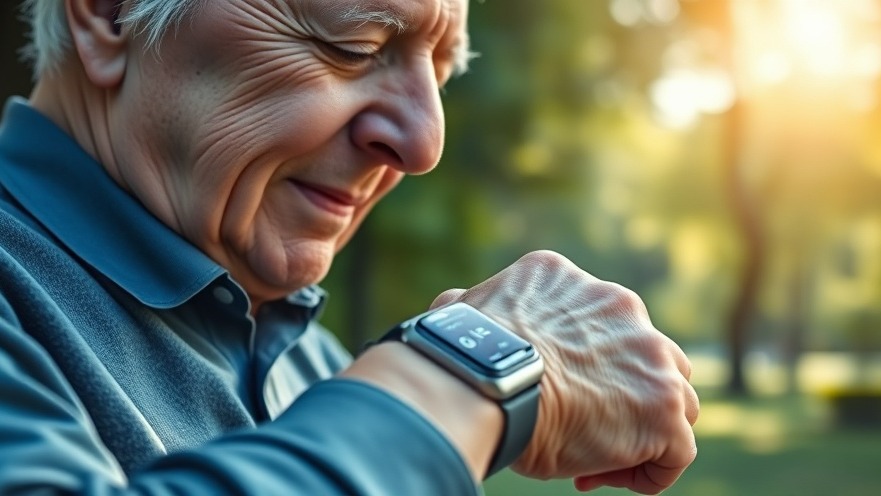
Revolutionizing Parkinson's Care through Wearable Technology
Wearable technology is changing the landscape of healthcare, particularly for chronic conditions like Parkinson’s disease, which affects millions globally. Characterized by symptoms such as tremors, stiffness, and balance impairment, managing Parkinson’s has traditionally involved medication and frequent doctor visits. However, advancements in wearable tech are offering innovative solutions that provide real-time monitoring and personalized treatment plans, significantly enhancing patient care.
Empowering Patients: The Role of Wearables
The integration of wearable devices in Parkinson’s management empowers patients by granting them control and insights into their own health. These devices continuously track movements, tremor frequencies, sleep patterns, and vital signs, which can be vital in understanding their condition. Unlike sporadic visits to healthcare providers where observations can be missed, wearables offer a constant stream of data that illuminates trends in a patient’s symptoms, allowing for proactive management.
Precision and Prediction: Tailoring Treatments
One of the most significant advantages of wearable technology is its ability to facilitate precise and personalized treatment. By collecting real-time data, healthcare providers can more accurately assess a patient’s condition and respond with tailored medication adjustments. Utilizing machine learning algorithms, these devices can even predict potential symptom exacerbations, ensuring that adjustments to intervention protocols occur before severe issues arise. Such timely interventions could mean a marked improvement in the quality of life for individuals with Parkinson’s.
Accessibility and Convenience with Telemedicine
Remote monitoring technology and telemedicine options provide yet another layer of convenience for Parkinson’s patients, allowing them to receive consistent care without frequent trips to a clinic. The ability to share real-time data with healthcare professionals enables timely adjustments to treatment plans, reducing the burden of mobility issues often faced by these individuals. Telemedicine ensures that patients maintain their care regimen effectively and fosters stronger relationships between patients and providers through regular virtual check-ins.
The Role of Assistive Devices in Daily Life
Various assistive devices, such as the GyroGlove and Liftware Steady, are designed to help manage symptoms like tremors and enhance quality of life. They allow patients to perform daily activities more independently by providing stabilization and counteracting the effects of tremors. These devices aim not to stop the tremors completely but instead improve usability in everyday tasks, contributing significantly to the user’s autonomy and dignity.
Addressing Common Misconceptions about Wearable Technology
Despite the benefits of wearable technology, misconceptions persist about its role in managing Parkinson’s disease. Some may believe these technologies replace traditional interventions, while in reality, they augment and enhance existing healthcare practices. Assuring patients and providers that wearables do not reduce human interaction but rather enrich the partnership between patients and their healthcare teams is crucial for broader adoption.
Looking Ahead: Future Innovations in Parkinson's Care
As wearable technology continues to evolve, the future holds promising innovations for Parkinson’s management. With advancements in artificial intelligence, we can anticipate even more refined predictive models that cater to the unique disease progression of each patient. Integrating these new technologies will help assure that patients receive optimal care tailored to their specific needs.
By embracing wearable technology, we can enhance the management of Parkinson’s disease, creating a world where patients feel empowered in their care journeys. As healthcare professionals, staying informed about these trends is essential for improving service delivery and cultivating stronger connections within the community.
 Add Row
Add Row  Add
Add 






Write A Comment